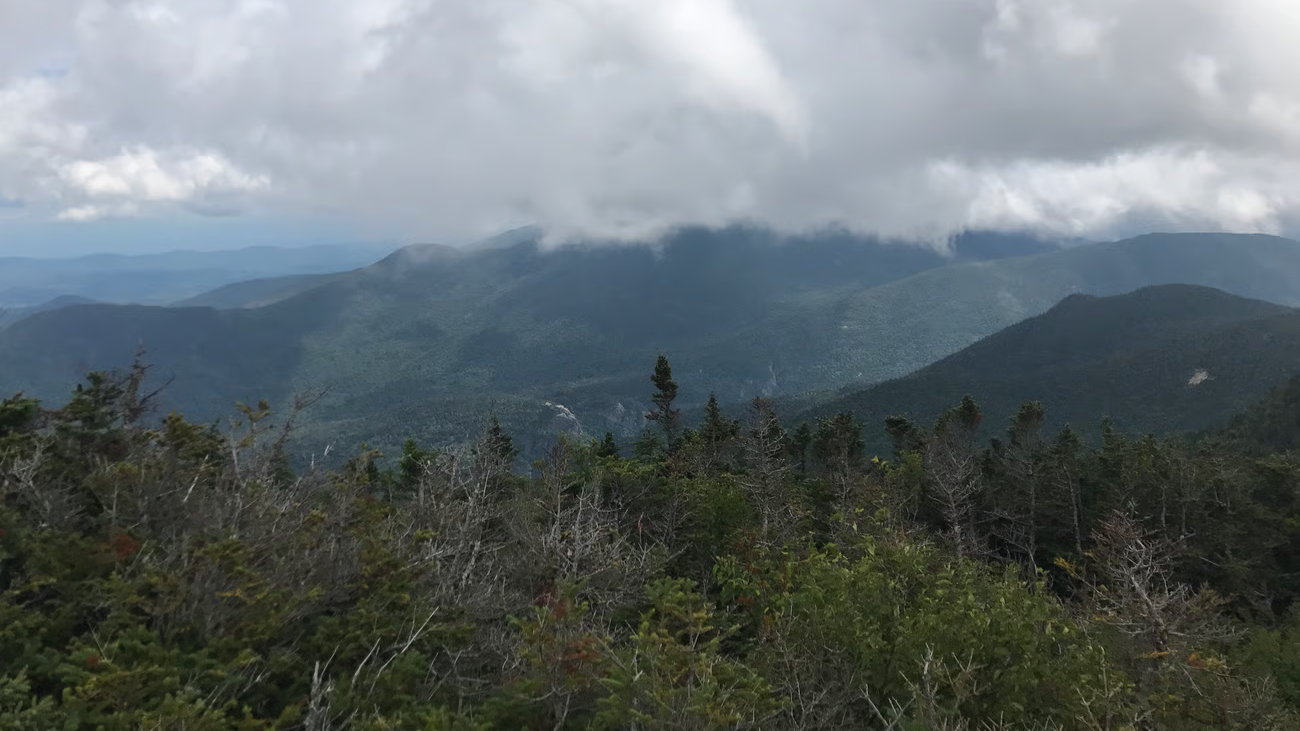The warped trunks of gray, leafless conifers always distracted me when I first started hiking to the alpine zones of New England’s peaks as a student at the University of Vermont.
Compared to the lush forest around them, these sickly specimens stuck out like sore thumbs, and it wasn’t until I was hiking in the Adirondacks with an environmental science major that I learned what I saw was nothing compared to how the forests looked decades ago.
Trees at this elevation — red spruce, especially — were once hallowed skeletons from the intense acid rain of the 1980s.
Unlike climate change, acid rain is a calamity that my generation largely hasn’t had to contend with, thanks to legislation passed in 1990.
Last week, I was reminded of the distinctly Maine origins of that legislation by one of the architects themselves, former U.S. Sen. George J. Mitchell.
At an event commemorating the 10-year anniversary of the Senator George J. Mitchell Center for Sustainability Solutions at the University of Maine, Mitchell commended his mentor and predecessor, Rumford-born Sen. Edmund S. Muskie, and outlined the paths to their trailblazing environmental work.
Like Muskie, Mitchell was born in a milltown, Waterville, and grew up in a working class family along a major Maine river decimated by industrial pollution.
“The Kennebec River was so polluted at the time that the cheapest place to live was along the river bank,” where the stench lingered, Mitchell said. “That’s where my family and I lived.”
After graduating from nearby Bowdoin College in 1954, Mitchell earned a law degree from Georgetown University in 1960 and started as Muskie’s executive assistant in 1962.
A year later, Muskie became chairman of the freshly minted Senate Subcommittee on Air and Water Pollution and kicked off a prolific 10-year run ushering numerous environmental laws through Congress.
They culminated with the Clean Air Act of 1970 and Clean Water Act of 1972, which authorized the first federal limits on pollution and created the U.S. Environmental Protection Agency to enforce them. No longer would mills be able to dump waste into the Androscoggin and Kennebec rivers unchecked.
When President Jimmy Carter selected Muskie as his Secretary of State in 1980, Mitchell was appointed to his predecessor’s Senate seat and immediately threw himself into environmental policy.
As he climbed the ranks he prioritized an issue that hit close to home: acid rain.
Prevailing wind patterns transporting air pollution from a dense cluster of power plants in the Midwest hit Maine and other New England states especially hard with acid rain in the 1970s and 1980s.
That’s because sulfur dioxide and nitrogen oxides, pollutants primarily emitted by coal-fired power plants, react with water and oxygen in the earth’s atmosphere to form sulfuric and nitric acids, often traveling hundreds of miles before falling to the surface with precipitation.
Acid rain’s harms compounded atop New England mountains, where alpine forests were enshrouded in cloud cover and high elevation tree species, like red spruce, absorbed the acidic precipitation.
Exposure to acidic precipitation significantly reduces the cold tolerance of red spruce needles, mortally wounding them. One study estimated a 50 percent dieback of red spruce trees at high elevations in the Adirondacks and Green Mountains throughout the 1970s and 1980s, damage still visible today.
In the late 1980s Mitchell introduced numerous bills to reduce sulfur dioxide, nitrogen oxide and other air pollutants in an attempt to overhaul the Clean Air Act, maintaining his resolve after they failed and were withdrawn.
Elected majority leader in 1988, Mitchell eventually used his position to negotiate a compromise with his Republican colleagues.
Though some provisions were weakened, the 1990 Clean Air Act amendments ultimately passed and provided formidable updates to the foundation set by Muskie 20 years prior.
They required states to set and meet air quality goals, tightened vehicle emissions standards, created controls on hazardous air pollutants, and, crucially, set limits on nitrogen oxides emissions and implemented a cap-and-trade program to reduce sulfur dioxide emissions.
An analysis conducted by the EPA estimates that the 1990 regulations prevented 230,000 deaths through 2020 and added $2 trillion to the U.S. economy by boosting worker productivity and avoiding medical expenses.
Given current polarization, partisanship and science denialism, Mitchell said the path to confronting climate change is far more daunting.
He’s surprised and worried by the substantial backlash to climate change science, he said.
Yet some of this concern, he said, is alleviated by his namesake center’s ability to train students and empower researchers.
David Hart, director of the Mitchell Center, promised as much in his own remarks.
He offered glimpses into the current projects supported by the center, like efforts to address energy insecurity in Wabanaki and rural communities from associate professor Sharon Klein and Ph.D. student Jasmine Lamb, a member of the Passamaquoddy Tribe at Pleasant Point.
“We know there aren’t any quick fixes to sustainability problems, so we’re in this work for the long haul,” Hart said. “We’re deeply committed to training future generations of leaders and problem solvers.”







